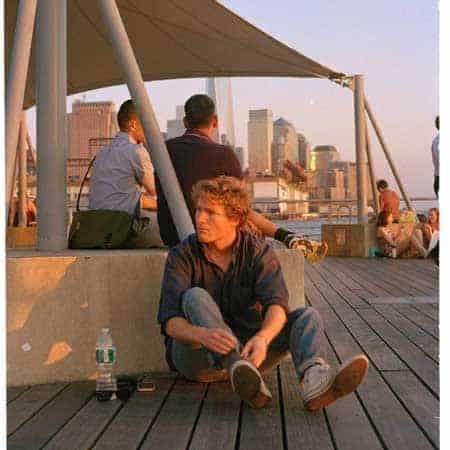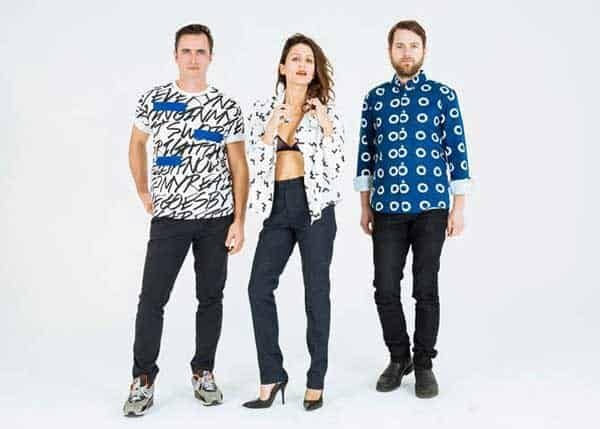The fashion industry has a long history of becoming a stage for groundbreaking movements.
From the first high-end, ready-to-wear, plus-size clothing of Marina Rinaldi to Viktor and Rolf’s avant-garde designs, the runway has seen a lot of changes over the years. Today, the fashion industry is still working its magic across the world. And in terms of gendered clothing, modern fashion brands are continuing, to evolve, and exploring the limits of androgynous fashion.
Androgynous fashion has shaken the runway numerous times, but it is more apparent in the 21st century. Androgyny is the combination of masculine and feminine characteristics and is often connoted with gender identity and sexual lifestyle. Though gender and sex continue to be hot topics, people nowadays are more accepting and open to the idea of how a woman or man wants to be perceived. Androgyny accepts anyone and anything, so fashion has taken the power of this word and created garments that are non-gender conforming. This means men and women are free to wear whatever clothing they wish, be it a dress or a suit. However, androgynous fashion wasn’t always targeted at both sexes. Historically speaking, androgynous fashion began to empower women’s fashion choices.
The Roots of Androgyny in Fashion
The first fashion designer that gave women the freedom to wear pants casually was Coco Chanel. Yes, the woman who is famous for the little black dress made pants (or trousers) a popular option for women. The simple decision of wearing sailor pants instead of a swimming costume one day shook the fashion world, for it was unheard of back in the 1910s. And though she did not intend for her pants to change the history of fashion, it had led other popular designers to follow her.
In the 1960s, Yves Saint Laurent revolutionized women’s wardrobe by giving women the iconic Le smoking suit. The Le Smoking suit is equivalent to the man’s black tie, and it offered women a long, minimalist, androgynous style. Laurent’s Le Smoking also helped pioneer familiar looks like the pantsuit and power suit.
Years after Yves Saint Laurent’s Le Smoking, androgyny started affecting the male audience. The late 1960s introduced the Peacock Revolution, and it was the perfect time for men to embrace their daring side. One notable fashion designer during this period was Michael Fish. Mr. Fish broke the dull male aesthetic and boldly chose to create clothing that used floral and loud patterns. There was more drama in menswear both on and off stage, and it allowed guys to fully express themselves with their clothes. Bright colors and clashing patterns were worn by rock legends like Jimmy Hendrix and Mick Jagger; and they were not afraid to cover their face with makeup, too. Iconic Peacock Revolution looks included the Mr. Fish’s Man Dress, which had been worn by David Bowie.
From the seventies to the eighties, more people began experimenting with the boundaries of androgyny. Prince opted for the slender side of fashion with his bedazzled outfits. While Grace Jones aggressively took the runway with her chiseled fashion taste. However, no other era blurred the lines of gendered clothing like grunge. Grunge fashion was born in the 1990s and it was the opposite of the 60s Peacock Revolution. Grunge fashion was all about clothes that are loose, torn, secondhand, or unglamorous. It was a statement that rebelled against the “manufactured image” a lot of brands sold. Grunge was the time of the rise of Nirvana’s lead singer, Kurt Cobain. And Cobain was also known as a man who played with androgynous styles. When Cobain rocked his shows wearing tiaras and babydoll dresses, he was already questioning the limitations that society has built for people. He used this style to play with gender and celebrate the uniqueness of outsiders and the concept of otherness.
Androgynous Fashion Today
Though androgynous fashion has had pinnacle moments throughout the years, today’s androgynous looks are but a pastiche of the past. With numerous icons to grab inspiration from and the androgynous mindset already laid out, androgyny isn’t something new. Nevertheless, it can’t be said that the 21st century did not add anything significant to this style. There are now fashion labels that cater to androgynous fashion. Brands like VEEA, Saint Harridan, One DNA, and TILLYandWIlliam, are filling-up wardrobes of individuals who have non-gender conforming fashion styles. Also, people are no longer afraid of experimenting with their fashion choices and have incorporated the androgynous look into their lifestyles.
Take Korean fashion as another example. A lot of garments from the Korean fashion industry are made to fit both sexes. As seen on the streets and runways of Seoul Fashion Week 2014, many K-pop stars are not afraid to cross the line that divides gendered clothing. G-Dragon from Big Bang, for example, is often seen with a wide-brimmed hat on top of his curly locks and a Chanel bouclé jacket to give him a soft/casual look. On the other hand, women are adding masculine nuances to their outfits (e.g., neckties and vests) to match their colored nails and hair.
So even if it feels like androgynous fashion has hit a wall, it’s still possible for it to unexpectedly show the world something incredible.










